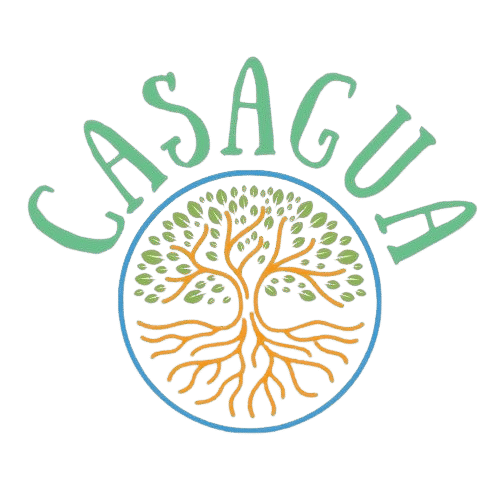To read this blog in Spanish, please click here.
We believe that holistic and place-based environmental education is key to achieving our vision of a community that lives in harmony with nature, inspired by the Mayan cosmovision and engaged in social and environmental action.
So, what is place-based environmental education?
Place-based environmental education is practical, participatory and experiential. It engages all the senses in the embodied act of learning, generating care and understanding for the world around us through affective action. This means that learning isn’t focused on memorising, repeating, writing or staying still in one sedentary position. Rather, learning happens through doing, playing and experimenting. The place-based approach integrates “hand” and “heart” responses to stimuli in the natural environment as well as “head” responses. In other words, we aim to elicit physical and emotional engagement as well as intellectual, therefore ensuring a more holistic and well-rounded learning experience.

In his mapping of place-based education literature, Deringer states that a common theme is “the belief that the community should not stop at the walls of the schoolhouse, and that pedagogy should be rooted in the experience of solving local problems.”
Guatemala is among the 10 countries globally that are most vulnerable to natural disasters and the effects of climate change. In the Ixil Region, 87% of the population live in poverty and almost a third of children experience chronic malnutrition. Only 6 out of every 10 children of school age are studying.
There are, therefore, many urgent local problems that need holistic, relevant and rooted pedagogical solutions.
At Casagua, the garden is a teacher. Learning in, through, with and about the garden broadens children’s and adults’ engagement with their natural environment, including food systems ecology, conservation and native species protection. Through digging, composting, planting, harvesting and getting dirty, learning happens in creative and playful ways on the land. These participatory pedagogical activities give rise to the physical and emotional feeling of nature-human interconnection.
The motivation to protect place and community starts from a place of love.
When young people build affective relationships with our neighbours, the land, trees, rivers, animals and insects, they are taking the first step towards practical, creative and impactful solutions for happier and healthier local futures.

References
Deringer, S.A. (2017) “Mindful Place-Based Education: Mapping the Literature” Journal of Experiential Education 40(4). 333-348.
FAO (2019) Recuperando el pasado y el futuro. Available at: https://www.fao.org/guatemala/programas-y-proyectos/historias-de-exito/recuperando-el-pasado-y-el-futuro/en/
MINEDUC (2019) Anuario Estadístico de la Educación de Guatemala. Guatemala
World Food Programme (2023) Guatemala Country Profile. Available at: https://www.wfp.org/countries/guatemala

One thought on “What is place-based environmental education?”
Comments are closed.